On 25 May 1977 I delivered at the Polish Oriental Society a lecture about Geocentric Astronomy of the Book of Job –"He stretched out the North over the empty place and hangeth the earth upon nothing" (Job 26:7) – A heliocentric diagram from the period before Joshua's conquest unearthed in Israel confirms that the ancient Jews knew the heliocentric system elaborated later by Pythagoras, but rejected it (The Babylonian epic Enuma Elish mentions that the sun god Marduk established the orbit of the earth around the sun). The Biblical Secretaries of God knew about the relativity of the sunlight and therefore could not accept the heliocentric sun as the Light of the World and a Visible God. My article "At the Sources of the Copernican Heliocentrism" was printed in the "Urania" 1/1981/LII, monthly of the Polish Association of the Friends of Astronomy. Belief in Heliocentrism means belief in the sun god "seated on the royal throne" and ruling the world. (De revol. I,10)
“Beware lest we say, we have found wisdom” (Job 32:13) “No illumination”, remarks Joseph Conrad in The Arrow of God, “can sweep all mystery of the world. After the departed darkness the shadows remain.” “We have become increasingly and painfully aware of our abysmal ignorance. No scientist, fifty years ago, could have realized that he was as ignorant as all first-rate scientists now know themselves to be.” (Abraham Flexner, Universities, New York, 1930, p. 17) “Can we not see that exact laws, like all other ultimates and absolutes, are as fabulous as the crock of gold at the rainbow's end?” (Gilbert N. Lewis, The Anatomy of Science, New haven, 1926, p. 154) Solomon knew that YHWH who created the sun in the heavens decided “to dwell in thick darkness” (1 Kings 8:12)
In the ancient Babylonian astrological system, it is the Sun-god who is the ruler and main god of the zodiac. And all the gods of heaven (the stars) were considered offspring of the sun. According to pagan philosophy, all the star gods you have heard about in school were actually manifestations of the heat, fire and light which flowed from the sun. Copernicus called them “the family of the sun”. It was believed that it was the Sun-god who was the source of all things, and all the other gods were but emanations of the sun, "flesh of his flesh." Therefore, all the manifestations of the gods of nature were just manifestations of the one god, the Sun, (they were of his substance, or homoousios) whose worship by primitive man was in reality to Satan, because Lucifer's name means "Day Star," the "Illuminated One," or "Shining One" (Young's Analytical Concordance to the Bible, Young, 1970, p.806)
This global solar religion of Nature is reflected in various languages. Salverte in his Des Sciences Occultes, observed: "Almost all the Tartar princes, trace their genealogy to a celestial virgin, impregnated by a sun-beam, or some equally miraculous means." In India, the mother of Surya, the sun-god, who was born to destroy the enemies of the gods, is said to have become pregnant in this way, a beam of the sun having entered her womb, in consequence of which she brought forth the sun-god.” In Akhenaten's Hymn to Aten he is said to bring children into being in women, and make fluid into mankind.
The name of Persian sun god Sure is cognate with Chaldean zuhr (“to shine”), zuhro (“the Shiner” cp. Zorro) and, of course zuro (“the seed”) because a beam of light was also an impregnating seed. The name Pyrisoporus, as aplied to Bacchus, means Ignigena, or the “Seed of Fire”, and Ala-sporos, the “Seed of God”, is just a similar expression formed in the same way. The Christian heretic Justin who envisaged Jesus as ever-existent “seed-sowing Reason” believed that the good God was an erect phallus (Hippolytus, Refutation 5.7.21-22) The Nicene Creed's dogma about the Son of God being begotten and not created seems to echo this heretical teaching.
John Paul II wrote in his booklet Crossing the Threshold of Hope: “The words of the Council (Vatican II) recall the conviction, long rooted in the Tradition, of the existence of the so-called semina verbi (seeds of the Word), present in all religions. In the light of this conviction, the Church seeks to identify the semina verbi present in the great traditions of the Far East, in order to trace a common path against the backdrop of the needs of the contemporary world. We can affirm that here the position of the Council is inspired by a truly universal concern. The Church is guided by the faith that god the Creator wants to save all humankind in Jesus Christ, the only mediator between God and man, inasmuch as He is the Redeemer of all humankind.” (p. 81)
Shiva was and still is chiefly worshiped in the form of the linga, usually a short cylindrical pillar with rounded top, which is the survival of a cult older than Indian civilization itself.... The cult of the linga, at all times followed by some of the non-Āryan peoples, was incorporated into Hinduism around the beginning of the Christian era, though at first it was not very important.
The name Lingam appears as a name of Shiva in the Shiva Sahasranama where it is translated by Ram Karan Sharma as "(Identifiable as) a symbol of the origin of the Universe. Copernicus's expression “family of stars” belongs to the teachings of the Aryan cosmogony. A few years ago, Father George Coyne, head of the Vatican Observatory Research Group suggested that we might view stars as God's sperm, which is the basic teaching of the Aryan cosmogony. In the Hindu Myth when the desire arose in it (i.e. in the sun god in the shape of linga (phallus) “the creation” or rather emanation or emission (ejaculation) of semen followed. In the beginning there was sexual desire... John Paul II accepted the baptism of Shiva during his pilgrimage to India.
In Hindu Dharma, Bansi Pandit explains that "Shivalinga consists of three parts. The bottom part which is four-sided remains under ground, the middle part which is eight-sided remains on a pedestal and the top part which is actually worshipped is round. Gopisvar lingam showing lingam inside a eight-sided structure inspired the architecture of Al Aqsa mosque which is also a combination of lingam inside an octagonal structure. No wonder, that John Paul II's vision of the phallic Christianity of One World went hand in hand with his “Palestine-first policy”. This phallic Christianity was further elaborated in his sermons of the Theology of the Body.
The name Aur-ora, in the physical sense, signifies also "pregnant with light"; and from "ohra," "to conceive" or be "pregnant," we have in Greek, the word for a wife. The common name of peoples who worshiped the pagan sun gods was Children of Light as against Children of Darkness i.e. the Jews who refused to worship the object in Nature, such as the sun. The God of the Bible never allowed any person to approach Him in worship through any of his created objects of nature! In fact, God firmly forbids it! The apostle Paul spoke directly to this subject, in Roman 1:21-24 “…when they knew God, glorified him not as God, neither were thankful; but became vain in their imaginations, and their foolish heart was darkened. Professing themselves to be wise, they became fools. And changed the glory of the incorruptible God into an image…” Then in verse 25, Paul cut the ground out of anyone who thinks they can worship the created object rather than God, when he said, “Who changed the truth of God into a lie, and worshiped the creature more than the Creator…”
Spontaneous Generation also referred to as abiogenesis, is the theory that living things arise de novo without living parents from lifeless matter. The attempt of the ancients and medievals to explain the origin of lower forms of life from natural causes, rather than attributing it directly to a supermundane or divine power, was scientifically respectable for Aquinas. Pliny wrote: “We are so much at the mercy of Chance that Chance is our god”. Indeed, in ancient Greece, Tyche or Chance was not merely believed in but worshiped alongside the other gods and goddesses. The two greatest historians of antiquity, Thucidides and Polybius, took chance (with a small 'c') as a cardinal element for historical analysis; Plato and Aristotle, taking an ultimately theological view of the universe, equated chance with all that did not belong to the directly purposive act of god and man, that is, in effect, with physical law.
The Stoics were pantheists: “All are but parts of one stupendous whole, whose body Nature is, and God the Soul.” Would you call him Fate? Asks Seneca. You will not be wrong...Would you call him Providence? You will be right...Would you call him Nature? You will not be speaking falsely...Would you call him Universe? You will not be deceived. The favorite name was Zeus; under this name the most religious of the early Stoics, Cleantes hymned it. The Stoics were determinists.
Peculiar Cases of Spontaneous Generation
In the erotic cult of the Mare-goddess children were believed to enter into woman's womb as sudden gusts of wind; (semen verbi or, logos spermatikos!) and Homer's authority was weighty enough to make educated Romans still believe, with Pliny, that Spanish mares could conceive by turning their hindquarters to the wind (Pliny, Natural History, IV.35 and VIII.67)
Rome embraced the myth of phoenix; the Romans believed that on its death a grub came out of its body which in due time became a perfect bird; and that the new phoenix brought to Egypt the bones of its parent in the nest of spices in which it had died, and laid them on the altar in the temple of the sun in Heliopolis. It then returned to Arabia to live in its turn for five hundred years, and die and give life again to another as before. The Christians saw in this story a type of the resurrection; and Clement, Bishop of Rome, quotes it as such in his Epistle to the Corinthians. In other words, the doctrine of resurrection is rooted in Mythology. Let me remind in this context that for Pope John Paul II said that evolution is more than a mere hypothesis. Obviously, in Pliny's Rome they still believe that chance is their god.
St. Thomas Aquinas accepted the spontaneous generation of living things from decaying matter. Following in the footsteps of Pharaoh Akhenaten Aquinas also accepted the ancients' postulate that the active principle for such a power resides in some way in a celestial body. Since the sun's heat has a beneficial effect on the growth and development of living things, he thought that such heat could communicate the power of life to the slime of the earth. Not regarding the heavenly bodies as animated, however, he held that they could produce living things only in virtue of some higher power (De pot. 6.6 ad 10) As a heliocentrist he believed in the divine powers of the sun. Like Copernicus, and like father Lemaitre, the originator of Big Bang theory.
Let's peep deeper into Aquinas's mind. In the time of pope Leo I (Leo, Serm. XXI., De Nativ. Dom. p. 148), some of the Fathers of the Church said that “what rendered the festival of Christmas venerable was less the birth of Jesus Christ than a return, and, as they expressed it, the new birth of the sun.” It was on the same day that the birth of the Invincible Sun (Natalis solis invicti), was celebrated at Rome, as can be seen in the Roman calendars, published in the reign of Constantine and of Julian. Thus epithet 'Invictus' is the same as the Persians gave to this same god, whom they worshiped by the name of Mithra, and whom they believed to be born out of rock (petra genetrix this is to say out of matter). In other words, another case of spontaneous generation.
According to a widespread legend, Aquinas's teacher Albert the Great, by magical means, created an android – an artificial man, living, speaking, and answering all questions with such subtlety that St. Thomas, unable to answer its reasoning, broke it to pieces with his staff. (There is a matching Jewish legend about a Prague rabbi creating Golem). We find an echo of this legend in Aquinas's Summa Theologiae:”In light of man's rapidly increasing control over matter and energy, it would be in accord with such an analysis to hold that man might be able to dispose matter in such a way as to educe from it a living form. The living thing produced would then be the result of nature as well as of man's art (3a, 75.6 ad 1). Well, Polish poet Aleksander Wat, in his memoirs entitled My Age mentions that while he was imprisoned during WWII in the Moscow Lubianka prison he could borrow from the prison library books by St. Thomas Aquinas. Interestingly, the books by the French renowned Jesuit priest Teilhard de Chardin are exhibited in honorary place in the Moscow Museum of Atheism. De Chardin became the patron of the Cracow Universal Weekly while the paper was supervised by the then Karol Cardinal Wojtyla. (See also J. FARLEY , The Spontaneous Generation Controversy from Descartes to Oparin, J. Hopkins Univ. Press, Baltimore - London 1977).
The ancients asserted that life originated from the sun, and that everything when bathed in the light of the solar orb was capable of absorbing the solar life elements and later radiating them as flora and fauna. One philosophical concept regarded the sun as a parent and the planers as embryos still connected to the solar body by means of ethereal umbilical cords which served as channels to convey life and nourishment to the planets. In the solar philosophy light is being considered as the great nutritive principle (Cp. the Holy Communion mimicking the sun disc) of all things. Galileo said, " Il vino era luce impastata con humore" (Wine is light mixed with moisture) and therefore divine. If your blood is a mixture of light and moisture you are a Son of God. You have ichor in your veins. Like Elizabeth I who was as white as the marble statues of the Greeks or Romans.
The Virgin mother, giving birth to the sun god which Christianity has so faithfully preserved, is a reminder of the inscription concerning her Egyptian prototype, Isis, which appeared on the Temple of Sais: “The fruit which I have brought forth is the Sun.” While the Vigin was associated with the Moon by the early pagans, there is no doubt that they also understood her position as a constellation in the heavens, for nearly all the peoples of antiquity credit her as being the mother of the sun, and they realized that although the moon could not occupy that position, the sign of Virgo could, and did, give birth to the sun out of her side (similarly, the Buddha was born out of his mother Maya's side) on the 25th day of December. The teacher of Aquinas, Albertus Magnus states, “We know that the sign of the Celestial Virgin rose over the horizon at the moment at which we fix the birth of our Lord Jesus Christ.” John Paul II placed a statue of Buddha on an ecumenical altar in Assisi.
Thus the esotericism of pagandom was embodied in Christianity; the Christian church blindly follows ancient customs, and when asked for a reason gives superficial and unsatisfactory explanations, either forgetting or ignoring the indisputable fact that each religion is based upon the secret doctrines of its predecessor. Christianity shares with Masonry the pagan cult of the sun.
The primitive mind, recognizing the beneficent power of the solar orb, adored it as the proxy of the Supreme Deity. Concerning the origin of sun worship, Albert Pike, 33º, writes in his Morals and Dogma: “To them he (the sun) was the innate fire of bodies, the fire of Nature. Author of Life, heat, and ignition, he was to them the efficient cause of all generation, for without him there was no movement, no existence, no form. He was to them immense, indivisible, imperishable, and everywhere present. It was their need of light, and of his creative energy, that was felt by all men; and nothing was more fearful to them than his absence. His beneficent influences caused his identification with the Principle of Good; and the Brahma (the name means literally energy) of the Hindus, and Mithras of the Persians, and Athom, Amun, Phtha and Osiris, of the Egyptians, the Bel of the Chaldeans, the Adonai of the Phoenicians, the Adonis and Apollo of the Greeks, became but personifications of the Sun god, the regenerating Principle, image of that fecundity which perpetuates and rejuvenates the world's existence.” To the Egyptians the sun was the symbol of immortality, for, while it died each night, it rose again with each ensuing dawn. Therefore the Roman called their sun god Sol Invictus.
To the Egyptians the teaching of the Hebrew Torah was the insult to their most sacred institutions of their solar religion. That explains why the Jews were despised b y the Egyptians themselves, who, to insult them, said that the wicked god Typhon had two sons, Hierosolymus and Judaeus, and that from these the Jews were descended. Jesus answer to the Jewish people in the Gospel of John (8:42): “If God were your father, you would love me...Your father is the devil, and you do exactly what he wants. He has always been a murderer and a liar” echoes that ancient Egyptian calumny.” This verse echoes the Qumran Scroll describing the war of children of Light against the children of Darkness. Influenced by the same philosophy, Paul asks in Cp. 2 Cor 6:14: “What communion hath light with darkness?” John 1:5 “And the light shineth in darkness and the darkness comprehended it not,” suggest the same mythic war. John 3:19: “ And this is the condemnation, that light is come into the world, and men loved darkness rather than light, because their deeds were evil” cannot be reconciled with Luke 12:3.
The notion of “outer darkness” belongs to the heliocentric cosmology of the Aryans. The poetic figure of the Candle-Sun (See Mt. 5:15) stood for the Expanding Center exemplified in the Shri-Yantra mandala, which was composed around a central point – the metaphysical and irradiating point of primordial energy of Big Bang. The earliest state of disorganized creation or chaos was impelled towards the creation of a New Order (Dharma, Tao, Logos) whose heavenly nature holds from the center and spins all else around it because monarchy is necessary to the world for its well being (Dante). The “outer darkness” is beyond the actual reach of the expanding center of light, or, using the poetic figure of the Persian poet Omar Khayyam “outside the box.” “And the light shineth in darkness and the darkness comprehended it not.” John 1:5. The New Order meant working out the consequences of a change in the fundamental constants for the existence of our species. The pellet of matter which exploded was subjected to different laws of physics than these ruling the expanding world.
“And the city had no need of the sun, neither of the moon, to shine in it; for the glory of God did lighten it, and the Lamb is the light thereof.” (Rev 21:23)
Centuries before the Christian Era, the pagans revered the constellation of Aries (the Ram). Godfrey Higgins states: “This constellation was called the 'Lamb of God.' He was also called the 'Savior,' and was said to save mankind from their sins. He was always honored with the appellation of 'Dominus' or 'Lord.' He was called the 'Lamb of God which taketh away the sins of the world.' The devotees addressing him in their litany, constantly repeated the words, 'O Lamb of God, that taketh away the sin of the world, have mercy upon us. Grant us Thy peace.'” Therefore, the Lamb of God is a title given to the sun, who is said to be reborn every year in the Northern Hemisphere in the sign of the Ram. Especially in the Gospel of John, the most hostile of all Gospels to the Jews the phraseology of the ancient solar cult is abundantly applied to Jesus.”Life was the light of men” (Jn 1:4). “Light (i.e. Jesus) is come into the world.” (Jn 3:19). “A burning and shining light” (Jn 5:35). “A little while is the Light (Jesus) with you.” (Jn 12:35)
Paul in 1 Thessalonians 5:5 says: “Ye are all the children of light, and the children of the day: we are not of the night, nor of darkness.” Accordingly, Sunday became the holy day of week for the Christian Children of Light which was not to be the same as the Jewish Mosaic shabbat.
Bringing light into causal relationship with the sun, as all heliocentrists and votaries of the sun god do, conforms to the receptive capacity of human eye, but it misses this light which in the “darkness” of night leads “all the beasts of the forest to their food from God.” (Ps 104:20). The Nuer, an African nation, aware of the racist undertones of this teaching dividing people into good Children of Light and devilish Children of Darkness point out by their habits something else and good which nights bring to people and which is as important as dew for plants; for them events are marked by counting “sleeps” or by referring to the phases of the moon. “Sleeps” as time units seem a more logical reference to the passage of days than “suns” or days themselves. Insomniacs know very well the torturte of sleepless nights.
In more remote times, products now known to be poisonous were used to whiten the skin and thus making the people to look like the real Children of Light. For example, as early as 400 B.C.E. the Greeks whitened their skin with a face powder of lead carbonate. Poppea Sabin, the wife of Roman Emperor Nero, used this toxic substance to whiten her face. In the 16th century, arsenic was used by some Italian women to give their faces a translucent appearance. In other words they wanted to have shining faces like the sun queen Elizabeth I, or the transfigured Christ.
The skin is the body's largest organ, measuring some 20 feet for an average male and 17 square feet for an average female. It contains receptors that respond to pain, touch, and temperature. The skin is the body's first line of defense against heat, cold and trauma, as well as against toxins, chemicals, and pollutants. Ironically, the skin of these Children of Light has a potential enemy – their sun god.
A curious fact for the life of the Essenes emerges from a study of the Jubilees calendar; it began the year on the fourth day of the week, Wednesday, on the principle that it was only on that day that the heavenly luminaries were created, and thus one could not properly speak of “day and night” before that (Gen 1:14-19). They were called Jewish Pythagoreans for a reason.In the Hindu myth, Kala and Akala, time and not-time, are two forms of Brahma, after he had produced the world or rather the sun as the first thing in the universe. For that reason, the lunar calendar of the Jews offended the votaries of the sun god and therefore the Romans forbade the Jews to celebrate their lunar months.
I think that German poet Goethe caught very well the deeper meaning of the Biblical teaching about the sun having been created only on the fourth day. He observed: “Experience is not something simple, and can never be purely objective, because it is our own active organization which first makes experience possible, in that our senses take up only definite impressions, definitely shaped, moreover, by themselves, (We may stimulate the optical nerve as we will, the impression is always “light”, and so in the case of the other senses), while our understanding also sifts, arranges and unites the impressions according to definite systems. There are many problems in the natural sciences on which we cannot with propriety speak, if we do not call in the aid of metaphysics.”
After years of experimentation with time sensing in the honeybee, von Frisch concluded that “we are dealing here with beings who, seemingly without needing a clock, possess a memory for time, dependent neither on a feeling of hunger nor an appreciation of the sun’s position, and which, like our own appreciation of time, seems to defy any further analysis.”
While experimenters may think they have totally isolated their potatoes and their oysters by shielding them from light and changes in barometric or thermal conditions, these organisms have subtle ways of sensing what is really happening in the world outside. There are plants which sprout while the earth is still covered with snow. The “know” their time. In Poland they call them przebisniegi, or the snowpiercers.
Sir Cyril Burt in Arthur Koestler's The Roots of Coincidence destroyed Newton's dogma inspired by the pagan heliolatry. In Query XXX at the end of his Opticks Newton, like all other members of the Royal Society wondered: “Why may not Nature change bodies into light and light into bodies?” Swift satirized the Royal Society in Gulliver's Travels as the Grand Academy of Lagado, whose members made plans for extracting sunshine from cucumbers.
Here are Sir Burt's words: “Our tactile perception of the gravitational effects of mass (e.g. a grain of sand falling onto the skin) requires a stimulus of at least 0.1 gram, say about 1020 ergs; the kinaesthetic sense (e.g. lifting a weight) is coarser still. On the other hand, the eye in rod-vision is sensitive to less than 5 quanta of radiant energy, about 10-10 ergs or rather less. In detecting energy therefore man's perceptual apparatus is 1030 times more sensitive than it is in detecting mass. Had the perception of mass been as delicate as the perception of energy, the identity of the two would have seemed self-evident instead of paradoxical. When seeing light we should at the same time have felt the pressure or impact of the photons, and mass and energy would from the outset have been regarded as merely two different ways of perceiving the same thing...” At the same time our eyes are immune to temperature changes; we don't wear gloves on our eyes.
Creatures like us who see only in visible light deduce that everyone in the entire Universe, including God, must see in visible light. But God who created the world and its abundance showed Moses a different light never seen by the pharaoh Akhenaten! He showed him the light, which makes it possible for the owl, a pair of binocular with wings, whose eyes make up a third of its head size, to become the “night watchmen of our gardens”*. And this means that the owl can see a mouse in the darkness of night from a distance of several hundred yards. And that's why the sun god Apollo was called by the early Christians a “blind and stupid god.”
*On page 236-237 in the Dictionary of Symbols by J.E. Cirlot, the owl is described as follows, “In the Egyptian system of hieroglyphs, the owl symbolizes death, night, cold and passivity. It also pertains to the realm of the dead sun, that is, of the sun which has set below the horizon and which is crossing the lake or sea of darkness.”
The potto lives in the forests of western Africa. It usually sleeps during the day in hollow trees and hunts for food at night. The potto’s big protruding eyes help it see easily in the dark. And what about giant eyes of an Australian spider that can see an ant in black darkness of nights? Some animals also see in infrared, or with radically different kinds of eyes (barred, compound, iridescent, tabular, at the ends of stalks). The world that greets them looks totally different.
The Biblical teaching about relativity of light wasn’t entirely silenced by the Gentile Theology – as Newton called heliocentrism – concocted at Anu-Heliopolis in cooperation with Damascus.
The difference between black and white is not a matter of color, but of how much light they reflect. The terms are relative, not absolute. Black and white are fundamentally the same thing; the difference is only in the relative amounts of light reflected, not in their color. The fraction of incident light that human skin reflects varies widely from individual to individual. Skin pigmentation is produced mainly by an organic molecule called melanin, which the body manufactures from tyrosine, an amino acid common in proteins.
Albinos suffer from a hereditary disease in which melanin is not made. Their skin and hair are milky white. The irises of their eyes are pink. Albino animals are rare in nature because their skins provide little protection against solar radiation, and because they lack protective camouflage. These “Children of Light” tend not to last long. They don't survive under the killing rays of Copernicus's sun god.
People of Northern European ancestry and people of Central African ancestry are equally black in the ultraviolet and in the infrared (Google: Images, Ultraviolet Light to see for yourself), where nearly all organic molecules, not just melanin, absorb light. Only in the visible, where many molecules are transparent, is the anomaly of white skin even possible. Over most of the spectrum, all humans are black. Interestingly, taking interferon for hepatitis may change a white man into a black one.
The Scripture speaks of the precious fruits put forth by the sun and moon (Dt.33:14) The precious things put forth by the moon refer to those plants that depend on moonlight, as some flowers, because in the Biblical lore the light of the moon is independent of the sunlight.
We have also many “children of darkness” among the flora. Flowers of the Hedge Bindweed open wide in early morning. But they usually close in the bright sunlight later in the day. Night-Blooming Cereus climbs walls and rocky ledges in the West Indies and other warm lands. Gardeners in Hawaii and the Far East also cultivate this type of cactus. Its creamy blossoms open only at night The Holy Thorn of Glastonbury on Wearyall Hill blooms at the Winter Solstice and in May. Many plant species, including some ecotypes of Arabidopsis thaliana and winter cereals such as wheat, must go through a prolonged period of cold before flowering occurs. It is called vernalization requirement.
There is a particular organic pigment responsible for the absorption of light in such flowers as roses and violets – flowers so strikingly colored that they’re named after their hues. It’s called anthocyanin. Remarkably, a typical anthocyanin is red when placed in acid, blue in alkali, and violet in water. Thus, roses are red because they contain anthocyanin and are slightly acidic; violets are blue because they contain anthocyanin and are slightly alkaline.
Blue pigments are hard to come by in nature. The rarity of blue rocks or blue sands on earth is an illustration. Only the heavens radiate blue and declare the Glory of God. Keep in mind, there is dew for every blade of grass. And the dew belongs to darkness of nights not of the sun god's creation.
The mystery of long-range butterfly migration has been resolved by a team of scientists from Jerusalem’s Hebrew University Faculty of Agricultural, Food and Environmental Quality Sciences, the University of Massachusetts Medical School, the Czech Academy of Sciences and the University of California, Irvine.In findings published in a recent issue of the magazine, Neuron, the researchers reported that the butterfly’s signal to migrate thousands of miles over several months comes specifically from ultraviolet light detection in the insect’s eye.
Clearly, the more we learn about life, the more we see evidence of often subtle, yet truly profound, design. Such insights move many to echo the Bible’s words of praise to the Creator: “I will give thanks unto Thee for I am fearfully and wonderfully made. Your works are wonderful, as my soul is very well aware.” Psalm 139:14
Link between body clock, blood sugar identified
LOS ANGELES, Oct. 9 (Xinhua) -- U.S. researchers have identified a strong link between body clock and blood sugar, a finding that could lead to better diabetes treatments, according to a new study. The Stanford University School of Medicine said in a news release that the finding was based on lab experiments on mouse and human stem cells, as well as genetically engineered mice. The researchers found that daily fluctuations in hormones called glucocorticoids synchronize the biological clock as part of the mechanism for regulating blood sugar levels, according to the release. The finding may help lead to new ways to control diabetics' blood sugar levels and may improve understanding of why night-shift workers are at risk for obesity and diabetes, said the release. The research may also help find ways to reduce the disabling side effects of glucocorticoid drugs such as prednisone, an immune system-suppressing medication used to treat severe asthma, cancer and other conditions, the release said. Side effects include weight gain, poor blood sugar regulation and diabetes. "The most surprising part of our findings is that our internal biologic rhythms are embedded directly into another pathway, one that is essential to regulate metabolism," said Dr. Brian Feldman, an assistant professor of pediatric endocrinology at the School. "Some very simple modifications in how we use glucocorticoids may change whether these drugs cause diabetes," Feldman said. For example, giving these drugs in a pattern that matches the body's daily rhythms (which peak early in the morning) might help reduce the risk of diabetes, he said. The study appeared online in this week's issue of the Proceedings of the National Academy of Sciences.
Saturday, May 1, 2010
Subscribe to:
Post Comments (Atom)

















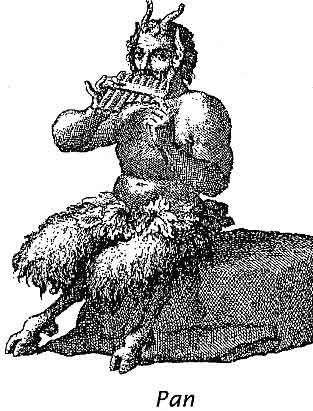














































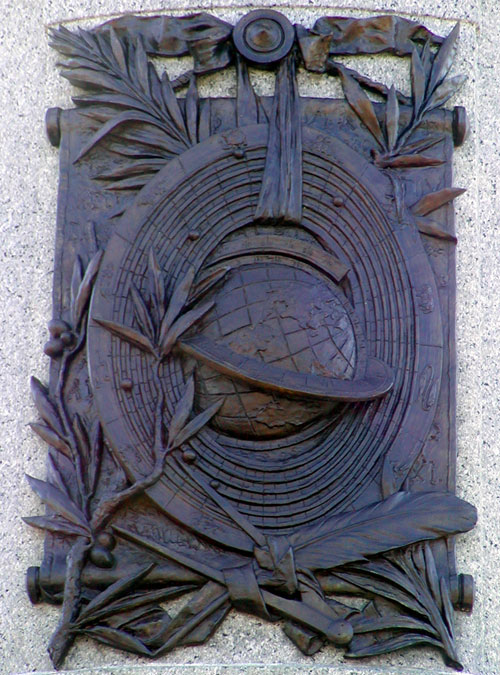







































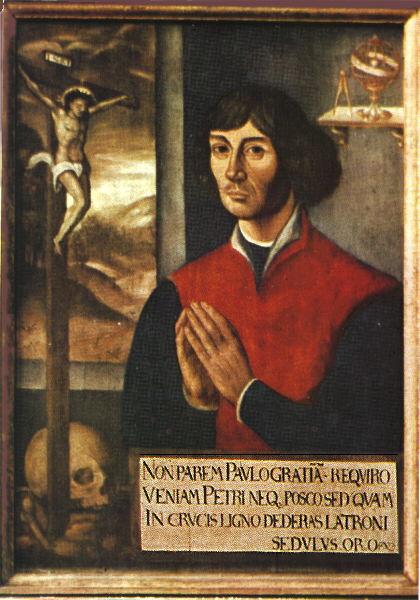















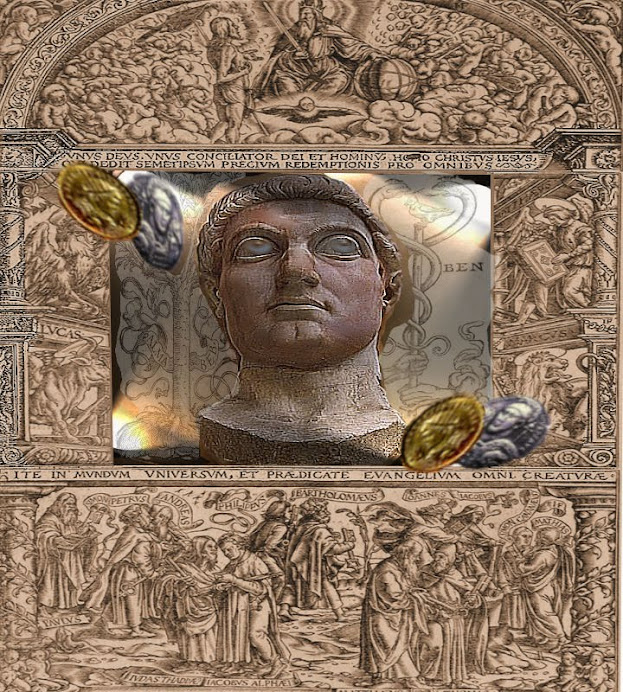



















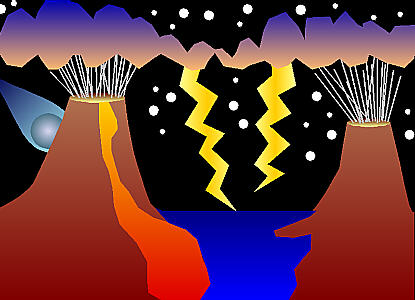


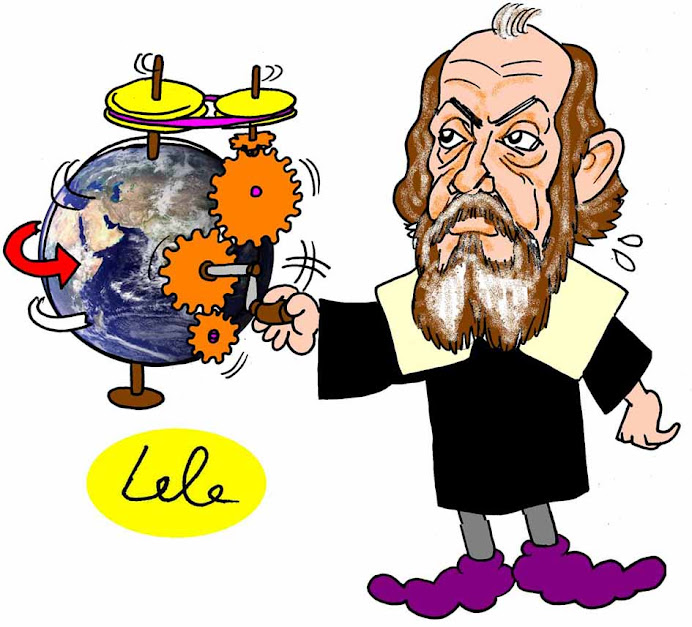













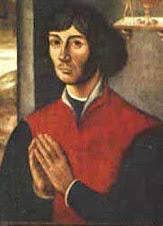.jpg)



















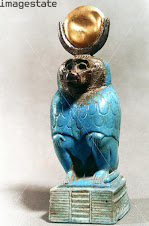








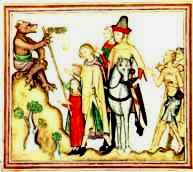

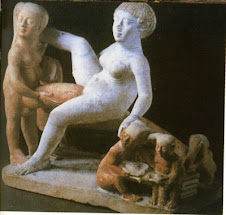











.jpg)





























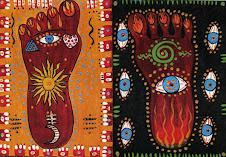
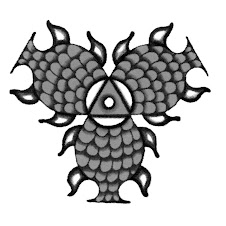











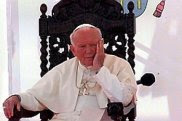

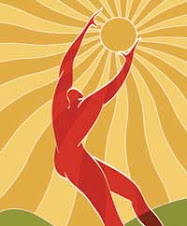


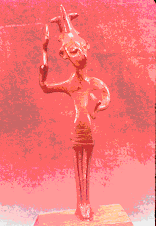










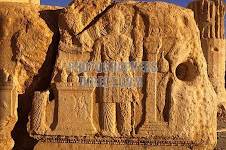
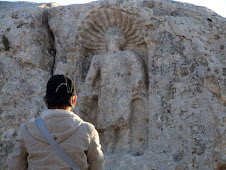






.gif)































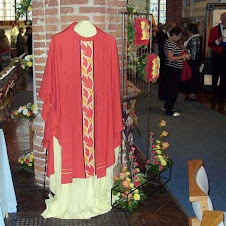


























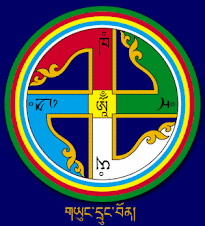

























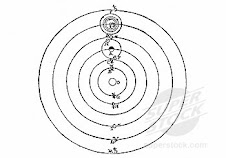

.jpg)













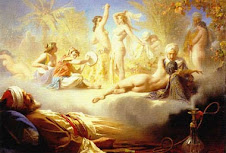
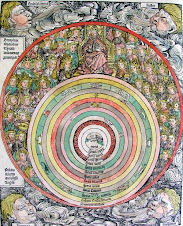












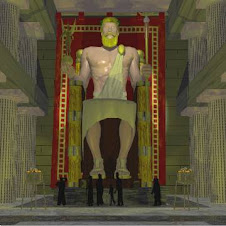





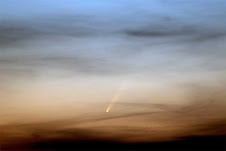

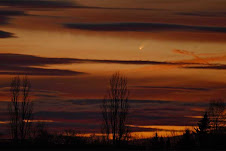










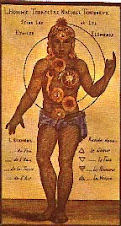
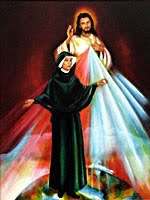
















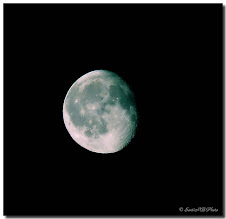




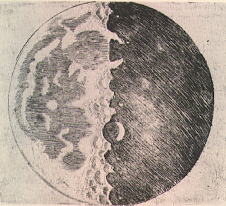




















































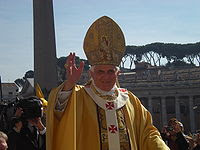

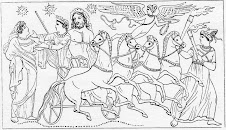








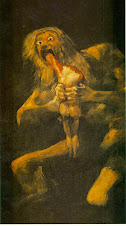




















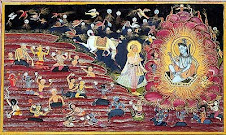

















++of+the+Sun+god..jpg)

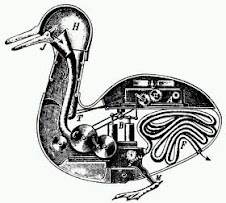











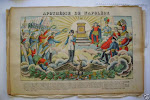



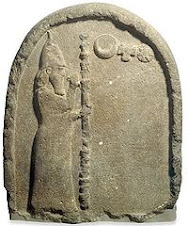





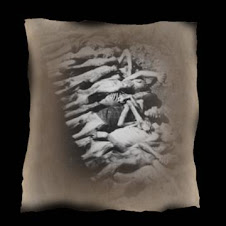














No comments:
Post a Comment